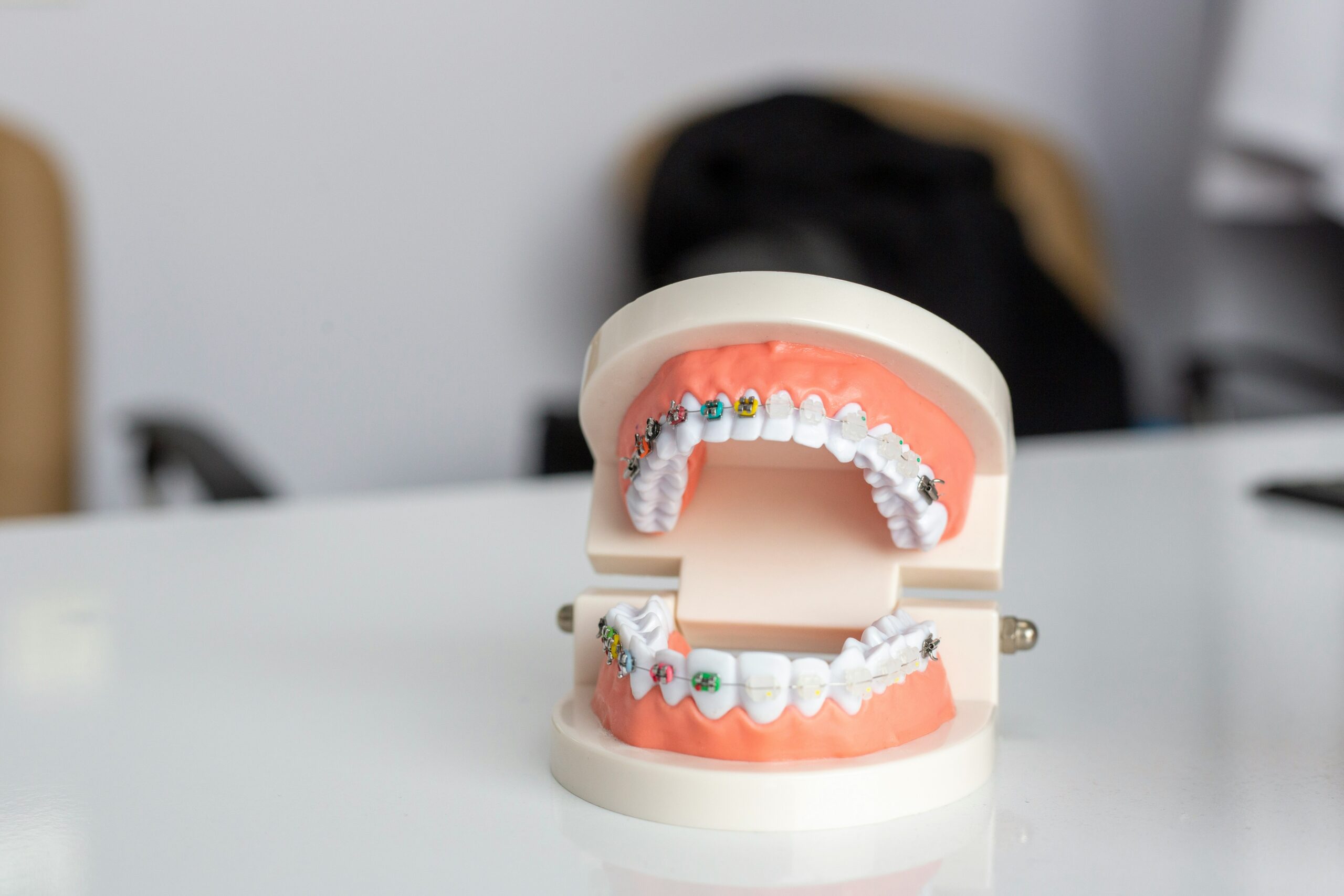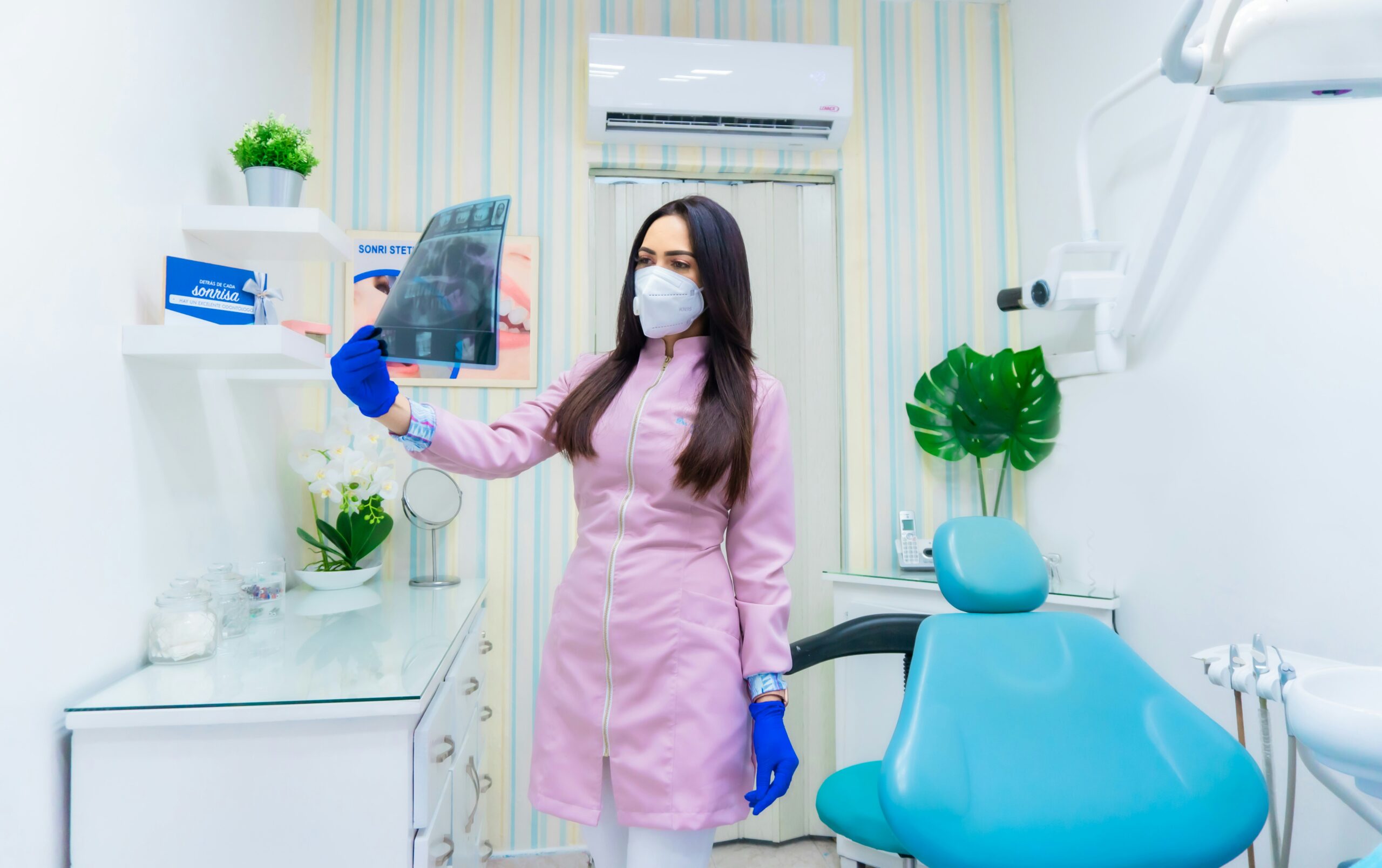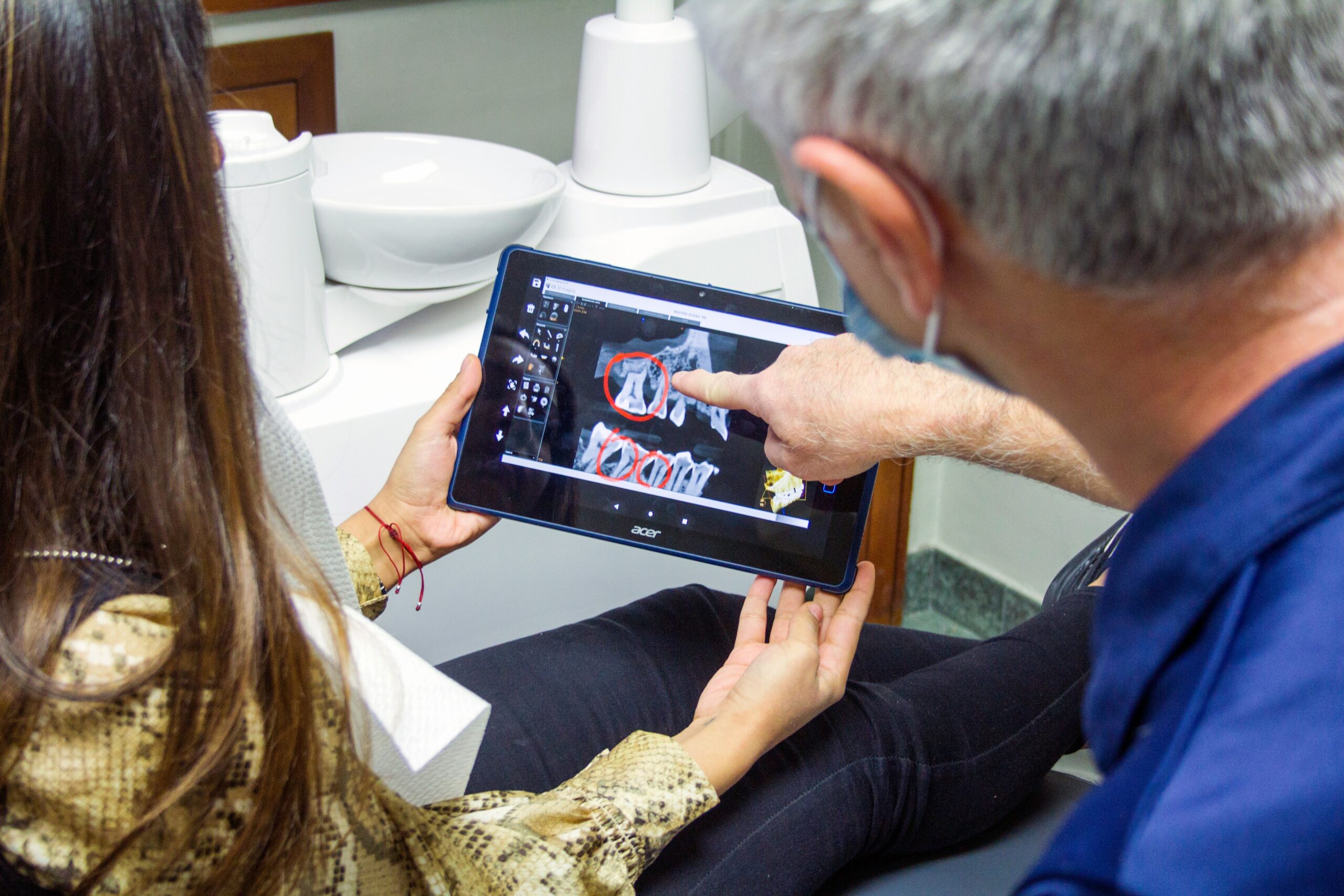An orthodontist isn't only a dental specialist; they are a medical master trained to reestablish harmony between the mouth and face. Orthodontists center on adjusting the teeth and jaw to handle the challenging issue of adjusting dental anomalies, which, in some cases, are alluded to as malocclusions.
They can handle crowded teeth, underbites, overbites, and indeed crossbites. Still, their commitments proceed. Moreover, orthodontists play a crucial role in keeping the teeth, jaws, and whole facial structure in the right arrangement.
Making others grin is a critical perspective of what they do in the expansion of their excellence. Teeth out of arrangement can cause numerous issues, including challenges cleaning between them and an expanded chance of gum sickness and tooth rot. A straight smile gives you confidence, which is priceless in expansion to being sound. Following treatment, patients, as often as possible, report feeling more sure. Orthodontists see patients of diverse ages and tailor their treatment to each individual's needs. An orthodontist may plan a treatment plan tailored for you, notwithstanding your age—whether you are an adolescent with early signs of misalignment or a grown-up looking to rectify your teeth.

The zone of dentistry known as orthodontics treats jaw and teeth alignment issues. The Greek words “orthos,” which implies straight, and “dontos,” which implies teeth, are the sources of the word “orthodontics”. This field focuses on making concordance between the teeth and jaws and confronting instead of, as it were, fixing teeth to see more engagement.
Misaligned teeth can cause more than essentially an awkward smile. They can create difficult-to-reach areas where plaque gathers, expanding cavities, and gum infection hazards. When teeth don't fit together appropriately, they can deliver over-the-top wear and strain on certain teeth, leading to future issues. Orthodontics addresses these troubles straight on. As a rule, travel begins with a careful examination, which may include X-rays, pictures, and dental engraves. At that point, the orthodontist makes a treatment arrangement, which may incorporate classic braces, modern aligners, or other gadgets. Ordinarily, therapy lasts one to three long time, with a maintenance stage to keep the recently settled teeth in place.
Orthodontic treatment isn't restricted to children. It is genuine that when their changeless teeth erupt, youths see an orthodontist habitually. In the event, early mediation can offer assistance in coordinating their development and ease consequent adjustments. Then again, grown-up patients might pick up an awesome bargain from seeing an orthodontist. More individuals than ever have been looking for orthodontic treatment recently. The concept of wearing braces afterward is much more enticing due to the more noteworthy assortment and a clear need for negative impacts that come with mechanical headways.
Who requires an orthodontic meeting? All ages, including grown-ups and young people, might benefit from their data. You ought to talk with an orthodontist if you've found that your teeth are crowded or if you have an overbite, underbite, or crossbite. Any basic nibble issues can be found by a master, indeed, in case your teeth appear to be reasonably straight. Mouth breathing, asymmetrical facial characteristics![]() , communication troubles, and chewing issues indicate that an orthodontic meeting is fundamental. If an individual wishes to make strides in their dental well-being or is self-conscious about their grin, orthodontic care may be accommodating.
, communication troubles, and chewing issues indicate that an orthodontic meeting is fundamental. If an individual wishes to make strides in their dental well-being or is self-conscious about their grin, orthodontic care may be accommodating.
Orthodontists utilize several instruments and procedures to induce a clear picture of your teeth and jaws. What do they need to attain? We must appreciate the circumstances in arranging to construct a personalized treatment arrangement that matches your needs. Their strategies, which run from the essentials of a clinical examination to more modern imaging gear, are planning to display a comprehensive picture of your oral well-being.
A clinical assessment is often the beginning step in which the orthodontist looks at your jaws, teeth, and gums. They explore for overbites, underbites, crevices, and crowded teeth as indications of misalignment. But it's not restricted to what they can see with their bare eyes. It's imperative to think about how your teeth meet once you chomp. The orthodontist can better comprehend the structure of your teeth and what must be rectified during this evaluation.
One common strategy utilized in orthodontic diagnostics is X-rays. They offer an up-close see of the fundamental bone structure, roots, and teeth. Numerous distinctive shapes of X-rays are utilized in orthodontics, each with a particular reason. All-encompassing X-rays, for occurrence, offer an exhaustive picture of your whole mouth and can highlight any fundamental issues, such as affected teeth or twisted bones. The relationship between your jaws and teeth is the center of cephalometric X-rays, which are basic for planning nibble correction methods.
These X-rays give a total picture of your mouth, from your teeth to your jawbones. They are particularly valuable in identifying illnesses such as tumors, blisters, and affected teeth that have not broken through the gum line, which would be missed amid a standard assessment. Panoramic X-rays are an important symptomatic apparatus since they give a total picture of oral well-being.
A cephalometric X-ray gives a side picture of your head and is utilized to decide how your jaws, teeth, and facial bones adjust. This imaging shape is particularly valuable for deciding jaw arrangement and arranging methods that require realigning the jaws and teeth. Having straight teeth isn't sufficient; it is also vital to guarantee that everything works appropriately.
The improvement of 3D imaging![]() innovation has given orthodontists access to a more capable toolkit instrument. A strategy for creating three-dimensional pictures of your teeth, jaws, and facial bones is called cone-beam computed tomography, or CBCT. The orthodontist can see everything from each point, which is much obliged to this full imaging, which makes it less complex to organize complex methods like jaw surgery or dental embed establishment.
innovation has given orthodontists access to a more capable toolkit instrument. A strategy for creating three-dimensional pictures of your teeth, jaws, and facial bones is called cone-beam computed tomography, or CBCT. The orthodontist can see everything from each point, which is much obliged to this full imaging, which makes it less complex to organize complex methods like jaw surgery or dental embed establishment.
Despite their apparent simplicity, pictures play a significant part in the orthodontic demonstrative strategy. The orthodontist can screen changes over time and compare how you looked some time recently and after by taking pictures of your confront, teeth, and grin from diverse points of view. These images can be an accommodating reference amid discussions so that you can see possible results and comprehend the treatment arrangement better.

Orthodontic treatment not only progresses your grin but also handles an assortment of dental and facial disorders that can have a noteworthy effect on your common well-being and quality of life. Orthodontists can treat a wide run of issues, counting crowded teeth and jaw misalignments, with a assortment of strategies and gadgets to create the finest results.
One normal issue that orthodontists address is the crowding of the teeth. Your teeth may turn, cover, or wedge together if your jaw cannot oblige them. Since it gets to be more troublesome to clean in between, this increases the chance of cavities and gum disorders. Braces or aligners are regularly utilized in treatment to dynamically move teeth into their legitimate areas, make them simpler to clean, and improve the appearance of your grin in general.
An overbite happens when the upper front teeth jut more than the lower front teeth. That might cause jaw torment, over-the-top wear on the foot teeth, or changes the shape of your confront. An overbite can be treated with braces, aligners, or, in the foremost genuine cases, jaw surgery. The objective is to realize a chomp that upgrades work and allure by appropriately interfacing the teeth and jaws.
An underbite happens when the lower front teeth involve the zone before the higher front teeth and is the inverse of an overbite. This may result in a greater lower jaw and trouble talking and chewing dinner. The sort of braces, aligners, or surgery required for treatment will depend on how extreme the underbite is. The objective is to move forward in appearance and work by legitimately adjusting the jaws and teeth.
A crossbite happens after you chomp down on something, and some of your best teeth tuck inside your lower teeth. That can influence one or more teeth, either within the front or back of the mouth. If cleared out untreated, a crossbite can lead to uneven tooth wear, gum infection, and jaw torment. Orthodontic treatment ordinarily involves repositioning the teeth into their appropriate positions with braces or aligners to maintain a strategic distance from these issues.
When the jaws are near and the best and bottom teeth don't meet, a crevice remains, resulting in an open bite![]() . It can be challenging to chew meals and conversation clearly as a result. Open bites are habitually caused by propensities like tongue pushing or thumb sucking, even though hereditary qualities might moreover be a calculate. Braces, aligners, and behavioral treatment are among the treatment choices for closing the space between teeth and tending to basic issues.
. It can be challenging to chew meals and conversation clearly as a result. Open bites are habitually caused by propensities like tongue pushing or thumb sucking, even though hereditary qualities might moreover be a calculate. Braces, aligners, and behavioral treatment are among the treatment choices for closing the space between teeth and tending to basic issues.
In some cases, orthodontic abnormalities might cause breathing issues, particularly when resting. A disorder known as obstructive sleep apnea happens when the aviation route in part or totally pieces while you're sleeping. It may result from stuffed teeth or a little jaw. Orthodontic treatment can reduce the rate of rest apnea and improve wind current by realigning the teeth or growing the jaw. Breathing increases rest, and rest is fundamental for great well-being and wellness.
The misalignment of the lower and upper jaws leads to malocclusion or jaw misalignment. This may result in talking and chewing challenges, as well as anomalies within the temporomandibular joint (TMJ). A misaligned jaw can also give the face an uneven appearance. Treatment options for improving appearance and usefulness incorporate braces, aligners, or jaw surgery.
Speech disorders are sometimes related to dental or jaw anomalies. Misaligned teeth or jaws might modify how you articulate specific sounds, causing discourse issues. Orthodontic treatment can help correct these troubles by adjusting the teeth and jaws, resulting in better discourse clarity and communication. A legitimately situated mouth can make talking less difficult and more characteristic by soothing strain on the muscles.
TMJ issues result in jaw torment, inconvenience, and trouble moving the jaw. They influence the joint that joins your skull and jaw. Strain, teeth crushing, and misaligned jaws are common causes. By realigning the jaw and facilitating joint stress, orthodontic treatment can help decrease TMJ indications. By treating the fundamental cause, orthodontic treatment can upgrade jaw work and decrease side effects related to TMJ.

Whereas it does not need to be troublesome, planning for an orthodontic visit can assist in guaranteeing a smooth and effective consultation. Whether you begin with a visit or a follow-up, you'll make the most of your time by arriving for your orthodontics arrangement.
Collect any X-rays and dental records from past visits. This data gives essential details about your dental history, permitting the orthodontist to create a more accurate diagnosis. If you usually begin with the arrangement, if it's not too much trouble, share any concerns or questions you have concerning your teeth, jaws, or, by and large, verbal well-being. Bring a list with you to ensure you note everything critical to talk about during your session.
Before seeing the orthodontist, make, beyond any doubt, you brush and floss your teeth altogether. Reviews are less demanding when the orthodontist can see your teeth and gums more clearly, which happens when your mouth is clean. Bring any dental apparatuses you wear, such as aligners or retainers.